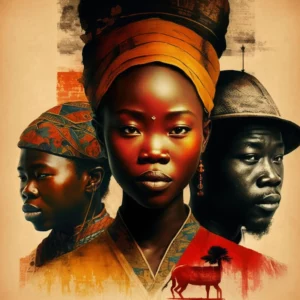Listen to this article
CONTENT IS SHAPING OUR COMMUNITIES.
Video production is the process of capturing video and its a process that has been perfected over time. In today’s digital media landscape, many things are changing. We are consuming video at a faster rate than ever before, and as such, the entire landscape is in transition. There are three stages of video production: pre-production, live action, and post-production.
At the start of January 2020 numerous blog sites were filled with predictions about trends in video production and where the industry was heading.
Now that the year is behind us, let’s look at what actually happened in video production, and what trends are likely to expand in the future:
Short Form Content
With the rise of social media and mobile devices, short-form videos that are less than 60 seconds in length have become extremely popular. Platforms like TikTok and Instagram have made it easier for people to create and share short-form videos that are engaging and shareable.
Live Streaming On Social Media
Social media as a whole are collections of websites and applications that enable users to create, contribute and distribute content through digital platforms. Services such as Facebook Live have gained a large following from gen x and gen y alike. The launch of Facebook Story Ads in September 2018 helped this platform grow. Facebook story ads help users get the gist of a company’s products and services through 5-10 second videos. Live streaming is one of the biggest trends that have surfaced in the recent past.
Mobile First Video Production
Eighty percent of the internet traffic is attributed to consumption of video content. Whether a consumer is sitting at home or on the go, mobile phones are often times the median of choice where consumers watch videos. On top of this, Google released the mobile first indexing protocol and with this, anyone would be wise to create video content for mobile phones.
4K quality videos
4K refers to the high resolution video format: 3840 x 2160 pixels or 4096 x 2160 pixels. It has four times the pixel resolution of 1080p (1920 x 1080 pixels). Other high definition resolutions often used in video production are 720p and 1080i. There has been a lot of talk about 4K for years, but but in 2019, the rollout by Digital giants Netflix and Hulu finally came to fruition. Other digital video viewing platforms youtube and Vimeo are slowly growing in popularity but viewers are still watching videos in 1080 and lower resolutions primarily because of slow load times. Content is of course still generated in 4K content is being generated, but it has not noticeably amplified or decreased.
Today’s generation is engrossed and zealous about cinematography and the highest video quality their pockets can afford is paramount. Viewers are picky and tend to be disinterested in the video production if the quality is low.
360° videos
When Google My Business introduced the option to upload 360° videos, there was a universal thought between online marketers that 360° video production would increase drastically. However, audiences were not nearly as interested as expected. In fact, Google Trends data has confirmed that interested has dropped further.
Videos without audio
Since Facebook denied audio for auto-played videos, marketers and content creators found many creative ways to produce videos without sound. Moving typography and subtitles are the two most common methods of auto-play video assets.
Virtual Reality videos
Virtual Reality is a technology that has been talked about for the last 4-5 years. It’s popular for it’s ability to put the user in an environment that feels reel. Users put on a headset with a optical screen set right in front of the users eyes. That screen gives users the feeling they are part of the sceen taking place. VR has not taken off due to the cost entry point and lack of original content for VR. As developers create more content, the technology will find a home. It may take a few more years, but by 2025, we think the technology will change the face of the media landscape.
Changes in aspect ratio
The aspect ratio of an image or video describes the proportional relationship between its height and width. It is commonly expressed as two numbers separated by a colon, as in 16:9. Interestingly, more and more videos are being delivered in perfectly square (1:1) screen ratios, which many people find preferable on mobile devices.
In-house video production departments
Companies regularly try to bring video production in-house for a number of reasons. The biggest one being effecting their bottom line in a positive way. At the end of the day, you need at the very least two highly trained video production professionals to successfully develop and deliver high quality video production. Often times two people can not deliver the best videos beginning to end. Each stage of the video production process takes a unique skill. By the time a company hires 2-3 video professionals to produce their content, if they do not hire the 2-3 perfect creatives, their videos are left needing a polish in one or two places. The circle and debate to outsource vs creating in-house will continue to go around for many years to come.
Drone footage
Drones are unmanned aerial vehicles used in video production to create Ariel views. Strides in technology have seen drones get smaller and cameras deliver high quality video footage, allowing for amazing aerial shots at a fraction of the cost of helicopter shots. That said, some cities like New York, have heavy restrictions on flying drones and drone pilots need a special license to fly and capture video footage.
Increase in spending on sponsored videos
Sponsored videos are a familiar concept if you watch TV. This is where a channel partners and works closely with a brand to incorporate that brand’s product and sometimes accompanied by a message in the show itself. It is also known as an integration. This type of video marketing has had a steady and strong live and presence in video production across multiple platforms including YouTube, Facebook, linear and non-linear platforms. Spending on influencer marketing has exploded. A high percentage of videos that play on instagram stories, twitter and Youtube are sponsored.
If you are looking for ways to incorporate new and time tested video production into your video marketing, give us a call.








